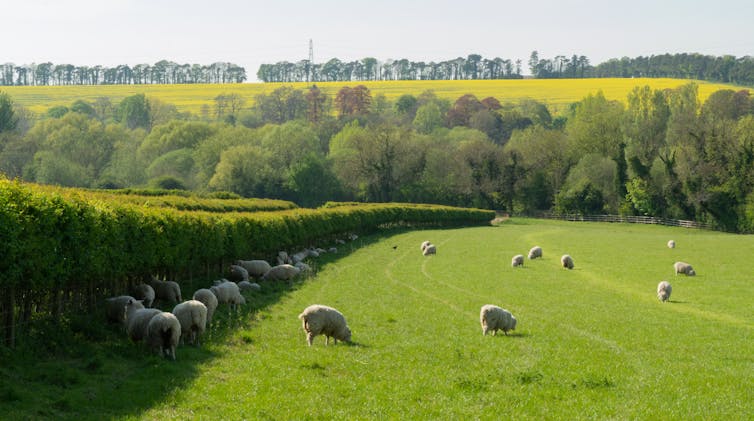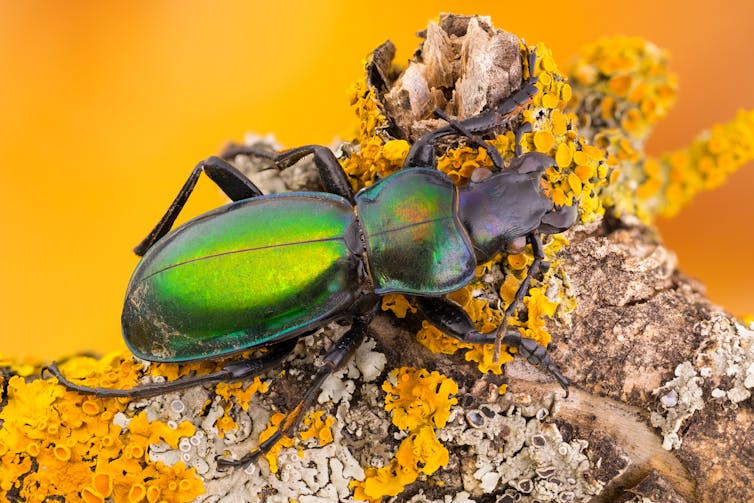Agriculture and Species Protection
"I tell my students, it's like all the Saturdays for the rest of your life are gone. From my perspective, it's just a crime that we are destroying the biodiversity on the planet." "Of course, people need to eat and we have to have agriculture, but we were wondering if there was a way to arrange crop fields in a way that would reduce the impact on biodiversity." "Even when you have these very narrow bits between crops, that still represents a refuge. So that a species that's in a crop field when something's going on -- plowing, for example -- that's a place they can go to sit out the storm, so to speak, without having to go great distances, which many of them can't do." "People are worried right now about the crisis in the numbers of pollinators. The numbers of birds, frog and insects are all declining, and all of these actually do things for us without us being aware of it (eating pests in the fields, pollinating crops; roots reduce soil erosion]. Most of the things we do rely on natural species." "Many farmers really do love nature, so if they could be convinced that they could make their fields smaller, have this large benefit to nature and not reduce their profit, they would probably be pretty amenable to it." "From my perspective, it's just a crime that we are destroying the biodiversity on the planet." Lenore Fahrig, biology professor, Carleton University
 |
It has been estimated by experts in the field of biology and biodiversity that human activity has been the cause of an estimated 15 percent reduction in species; one in seven becoming extinct in the last century and a half. Studies have concluded that the bird population has been reduced by close to 30 percent in the past fifty years; amphibians are disappearing at close to four percent yearly, and insect decline stands at roughly nine percent every decade.
Professor Fahrig has been leading research in Eastern Ontario and across Europe for the past decade, identifying strategies possible to help in halting the purge of species. She identified important factors in an article published in the journal The Conversation; the sizes of agricultural fields, and crop variety, all contributing to biodiversity decline. Suggesting alternatives that could see farmers making changes to help emeliorate the identified biodiversity losses.
 |
As a landscape ecologist, Professor Fahrig zeroes in on factors like deforestation, urban buildup and roads affectng biodiversity. While all these issues play a negative role in diminished biodiversity there is no other issue that matches the effects of agriculture on species reduction worldwide as agriculture. With her colleagues, she examined 93 Eastern Ontario landscapes, each one square kilometre in measure, chosen as representing field size varieties and crop diversity.
Sampling bird numbers, along with bees, plants, spiders, carabid beetles, frogs, syrphid flies, bats and butterflies in each of the fields and at their edges, they found that the loss of many of the species important for pollination and pest control would result in serious consequences should they be eliminated from the species pool thanks to the influence of agriculture on their habitat.
In their research, they found that where smaller fields were used, much greater biodiversity resulted, reasoning that some of the increased numbers would be attributable to fence lines, ditches and hedgerows that separate fields. Professor Fahrig, however, argues that on the evidence greater biodiversity resulted by 50 percent, where average field sizes were diminished from eight to two hectares.
Similar fieldwork took place, led by Professor Fahrig in over 300 landscapes located in seven different regions and climates in Europe; England, France, Germany and Spain. Where findings were seen to be consistent with data resulting from the Ontario studies. This, at the very time when economy of scale and operational efficiency in larger fields on larger farms are currently the preferred norm.
Labels: Agriculture, Biodiversity, Scientific Research, Species at Risk

0 Comments:
Post a Comment
<< Home